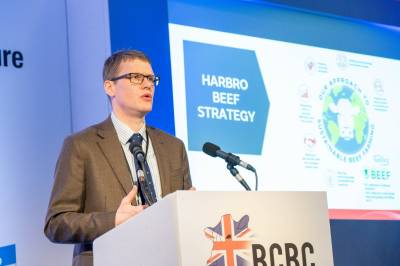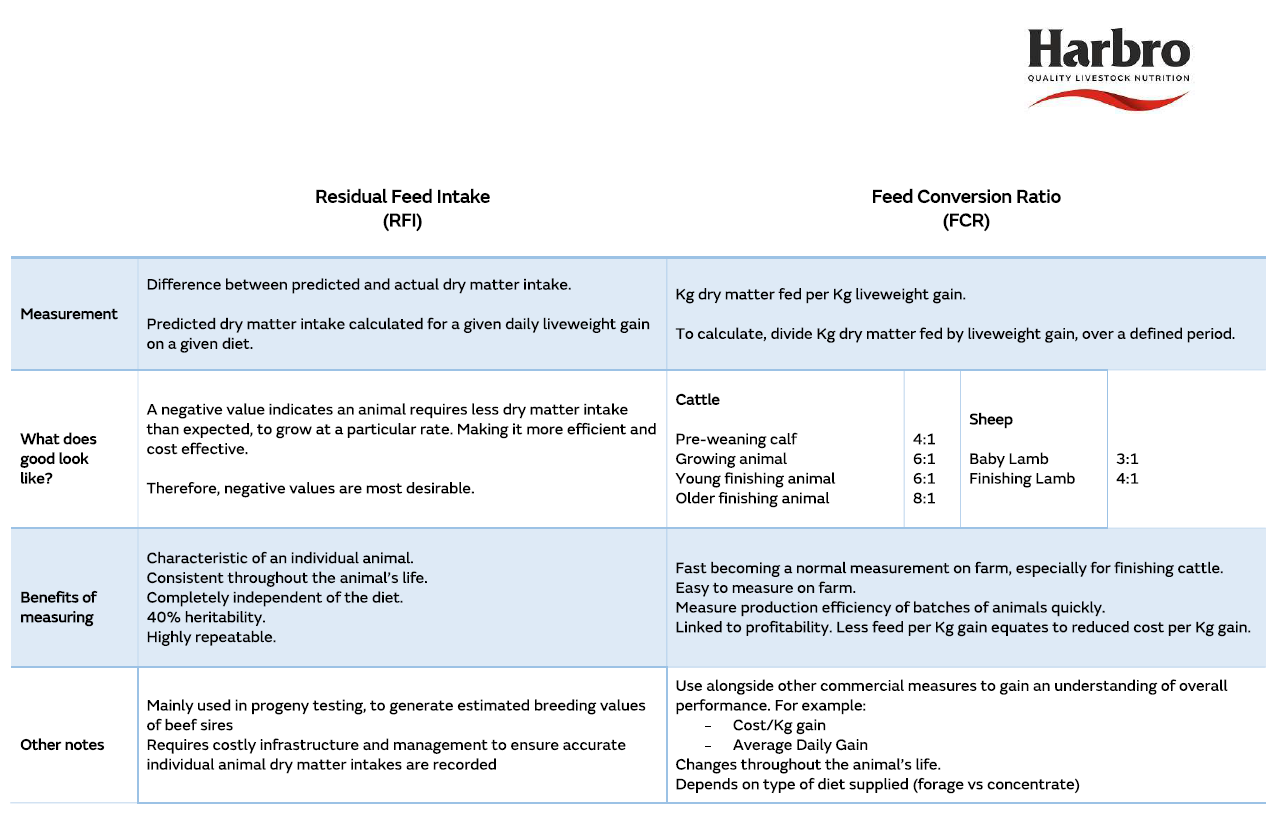
“Tell me what you know, not what you think” was a question posed to me in a recent meeting and its resonance has stuck with me. Many beef farmers are currently being faced with some hard questions regarding their businesses, but often don’t have enough real data and performance information to make informed decisions for making changes or improvements. The fall-back position is that decisions are being made based on what we ‘think’ more than what we know.
As a sector we must follow the focus of the pig and poultry industry, which not only strives for more liveweight gain, but is also driven to find the most efficient way to achieve that gain. In the uncertainty that many beef farmers find themselves in at present, facts and figures must be at the heart of the decision making process.
Knowing your market is key, both the requirements and how to achieve full value for your produce is the ultimate goal on output for any business. How do we achieve this maximum output without adding additional cost and actually delivering a profitable model to build on? When it comes to producing Beef, achieving full target weight of our Cattle at the youngest age, is not only the most important area to target from an economic point of view, but is also key for reducing our carbon footprint and methane production.
A growing picture, not only in the UK but globally, is the higher number of Beef calves coming from the Dairy Herd. This will change both the location and type of the traditional supply chain. In areas like the north of Scotland where suckler production has been the dominate model, a dramatic change to the location of Scotland’s Dairy herd to the south of the country, has resulted in a reduction of beef being produced in the north of the country. In the year 2000 the Scottish Suckler herd stood at over 520,000 cows, according to the latest census Suckler Cow numbers were down to 394,700 in 2023, a drop of over 24%. Effectively in locations of Scotland and the wider UK, where there isn’t a natural replacement to farming suckler cows these holdings will simply keep less Cattle. Other locations, that have access to milk processing, have seen some move into Dairy production.
Delivering improvements in livestock production, means that there are three areas that need to come together – genetics, nutrition and management. Without all three parts in place, nothing works, and money and investment is wasted.
Genetic improvement starts with the seed stock producers and the genetic supply companies that select and focus on the future of the beef industry. The dairy farmer makes the choice of the genetics used by purchasing the semen, their undoubted focus is on conception, short gestation, calf size and saleable value at 2-3 weeks of age. Linking this to growth through feed efficiency and carcase confirmation is the focus of the next part of the chain, with the final part – the processor and retailer looking for consistency of marbling and tenderness, fitting with their desired spec and price point. An integrated beef from dairy supply chain can link the whole process right through easier and in scale than our current suckler system. Transparency and honesty in any relationship is the best platform for making improvements and setting achievable goals, it’s just being clear which are the most important parts to focus on, but do these goals have side effects that can derail the whole project such as delivering on short gestation but having poor feed conversion?
Knowing your target weight for age is the obvious starting point. When looking at the suckler system, taking from birth to weaning, weaning to yearling and finally yearling through to finish are the three stages to focus on. Every farm system is different, and each will have its own strengths and weaknesses. However, simply looking at the maintenance requirements and costs of an animal per day, the larger and older the animal, the greater the costs are, just to stand still. Looking at the performance of leading suckler producers, a clear picture comes out. Increasing weight at the youngest age is the most efficient and effective time to increase weight and met target earlier. Using the best Genetics, which can utilise and convert protein and energy into frame and muscle is paramount to this working. At this stage of the calf’s life, it will convert high quality concentrate at a rate of 3-4kgs of concentrate for 1kg of liveweight gain compared to finishing stage where typically 7-8kgs of feed is needed to put on a kg of liveweight.

Correct management is important to this success. Feeding concentrates at an early stage in the animal’s life must contribute to the correct frame development and balancing starch with higher protein is vital. Then learning from our leading suckler producers, where their management of heifers and in particular at calf to yearling stage, is done differently from males, ultimately has led to greater carcase weights without increasing days to slaughter or excess fat cover.
Looking to improve performance, many beef farmers know very clearly their financial performance but often don’t have good enough information on their animal’s physical performance. Make sure you can obtain data without affecting performance and benchmark what you are currently achieving. You then need to look at industry standards and set your own target for improvement, honesty and taking all the team into the discussion is essential at this point. Lifting the bottom third of production by identifying and understanding why they are underperforming is the best way to achieve your goal. It may mean a shift in mind-set to remove these under performers earlier than normal, where taking your “first loss” potentially being the most economical way.
Margin gains comes into play and it’s often a lot of smaller changes that actually take place rather than the big aspirational change. Focus on the impact of transitioning cattle from different diets and any movements between holdings is an area we need to pay greater attention to. Recent trails conducted have seen a benefit of an extra 350grams of daily liveweight per day by extending the transitional period by an extra week and making small diet changes. Avoiding mixing different groups of cattle and keeping them in settled groups is also important, as it has been shown that when mixed together, it can take animals up to four days to recover full weight.
After a recent trip to visit the US studying feed lot management, their attention to detail matched the scale of the numbers of cattle being farmed. Water trough management is a clear focus for every business in the US and is an area that requires attention and focus in our country. This is a simple area that management comes into play and can improve production without needing to be bought out of a bag.
To conclude taking genetics, nutrition with management, focused on improving the bottom third by utilising the best system for your farm and cattle business. Embracing this full on and setting the KPI’s for economical progress, will be the best way to future proof the whole industry that fits with a strong green agenda. Going Green will stick, and gain momentum, if it also delivers efficacies that give monetary benefits. Getting animals to target earlier with less standard maintenance costs, can require less inputs, delivering on net zero targets but also generating income which is essential for any business that needs to reinvest to survive.